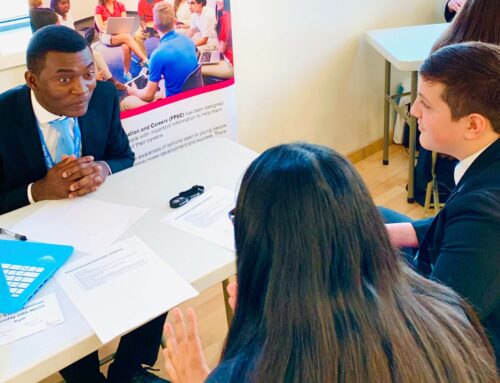
Undertaking CPD is not just about going on a course; being open to trying new ways of learning is an important skill to develop. Last time in the A-Z of CPD series we looked at a range of different activities from ‘daily work’ to ‘google scholar’. This week we help you consider alternative activities that you can do as part of your own continuous professional development, starting at the letter ‘H’.
Taken from CPD for the Career Development Professional by Siobhan Neary and Claire Johnson.

H
HELPING COLLEAGUES
What this is:
Providing help to a colleague; for example, someone new to using the new computer system at work.
How can this be used as CPD:
This can help you to think through what you yourself know about the system in order to explain it to someone else. It can hone your training skills and, depending on how easily your colleague understands what you have said, it can enable you to reflect on the ways in which you explain new things to people.
I
IN-SERVICE TRAINING
What this is:
This is training that is provided by your employer. It may be training that you have requested as part of your professional development or it may be training that everyone has to undertake – for example, on new legislation.
How this can be used as CPD:
This can be used to meet your identified CPD needs and should be planned, recorded, reflected upon and then put into practice. It is also a useful way of networking with colleagues; remember that a casual work-related conversation over lunch can often increase your knowledge.
INTERNATIONAL CENTRE FOR GUIDANCE STUDIES (iCeGS)
What this is:
iCeGS is an international research centre with expertise in employability and career development. The centre conducts research, provides consultancy, offers a range of training and delivers a number of accredited learning programmes up to and including doctoral level. Staff are involved in undertaking research across the world; advising governments, careers and employability providers, educational organisations; and working with practitioners.
How this can be used as CPD:
The centre has a free regular newsletter, a mailing list and an annual lecture.
Useful examples/websites:
J
JOURNALS
What this is:
Journals are publications (either paper-based or electronic) written by experts in the sector as a means of disseminating their knowledge or research. Some are academic in focus and others less so but still a source of information and knowledge.
How this can be used as CPD:
Reading relevant articles, reflecting on what you have learned and thinking through how you will put this into practice, doing this and then reflecting again is a valuable CPD activity. Sharing what you have read at a meeting or including it in a blog is a further way of synthesising and embedding what you have learned.
Useful examples:
- British Journal of Guidance and Counselling
- Career Matters
- NICEC Journal
- International Journal for Educational and Vocational Guidance
K
KNOWLEDGE SHARING
What this is:
Taking the time to share knowledge with colleagues.
How this can be used as CPD:
For example, having read an article, watched a webinar, attended a conference, etc. you will be in possession of some new knowledge which you could share with colleagues at a meeting, via a blog, a Community of Interest, network meeting, etc. Doing this will help to embed what you have learned but may also result in colleagues sharing new knowledge with you. Further discussion will lead to a greater understanding of what you know.
L
LECTURES
What this is:
An educational talk to an audience.
How this can be used as CPD:
Having determined your CPD needs, you may like to look for any lectures that are being held that meet any of your needs. Attending lectures helps to develop your enquiring spirit. Lectures are often recorded and can be accessed online after the event.
Alternatively, going to a lecture on a career development subject can often provide food for further thought and reflection and lead to wanting to learn more about that particular topic.
Useful examples:
- iCeGS annual lecture
- Inaugural lectures
- NICEC
What this is:
LinkedIn is a business-oriented social networking service. It is mainly used for professional networking.
How this can be used as CPD:
LinkedIn can be used to raise your professional profile and to develop your own network. Networking is not just about networking for today but also for the future. It is also a great source of knowledge on career paths, employers, jobs and industries.
Useful examples/websites:
LUNCHING AND LEARNING
What this is:
A form of networking where people come together for lunch or coffee to share their knowledge.
How this can be used as CPD:
Having a regular time each month where a group of professionals meet together to discuss a particular topic that one of the group has researched and leads upon can provide a valuable new source of learning in an informal atmosphere. The act of undertaking the research and leading the session is useful as CPD, as is hearing the information and the discussion that follows.

Emma Davies works within the editorial department at Trotman Publishing. Graduating from her Masters degree in 2017, she is familiar with all aspects of the student journey through university. She is passionate about helping students find the right career, and was a member of the SYP’s inaugural committee in the South West.





